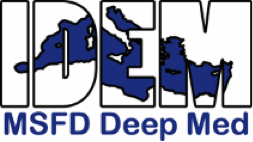The output from the Action 2 will allow the identification of i) major data gaps concerning either the availability of information pertaining to specific descriptors, or to specific sub-basins, or both, ii) the most feasible or promising criteria/indicators for the assessment of GES in the Mediterranean deep Sea, iii) the thresholds of indicators to identify the GES in the Mediterranean deep Sea and iv) the deep Mediterranean key areas for monitoring programs.
Task 3.1. Identification of major data gaps concerning either the availability of information pertaining to specific descriptors, or to specific sub-basins, or both will be performed by a critical quantitative and qualitative analysis of the results deriving from the meta-analysis and the habitat/ecosystems/pressures mapping. This task will allow to identify which data, for which descriptors, sub-basins and deep-sea ecosystems and human pressures/impacts are still missing (Leader ENEA; Participants: CNR, CSIC, DFMR, IFREMER, TAU, UB, UM, UNIVPM).
Task 3.2. Identification of the most promising and feasible criteria/indicators to be applied on the Mediterranean deep Sea. After the analysis conducted in the Action 2 and in Task 3.1., it will possible to identify the most promising and feasible criteria/indicators to be applied on the Mediterranean deep Sea and where necessary revise the existing MSFD criteria/indicators, or propose additional ones. (Leader: UB, Participants: CNR, CSIC, DFMR, IFREMER, TAU, UB, UM, UNIVPM).
Task 3.3. The indicators thresholds to identify the GES and the key areas to include in monitoring programs of the Mediterranean deep Sea will be identified in order to define GES for deep Mediterranean environments for the first time ever, and to provide guidelines to member states for deep-sea monitoring programs. (Leader: UB, Participants: CNR, CSIC, DFMR, ENEA, IFREMER, TAU, UM, UNIVPM).

